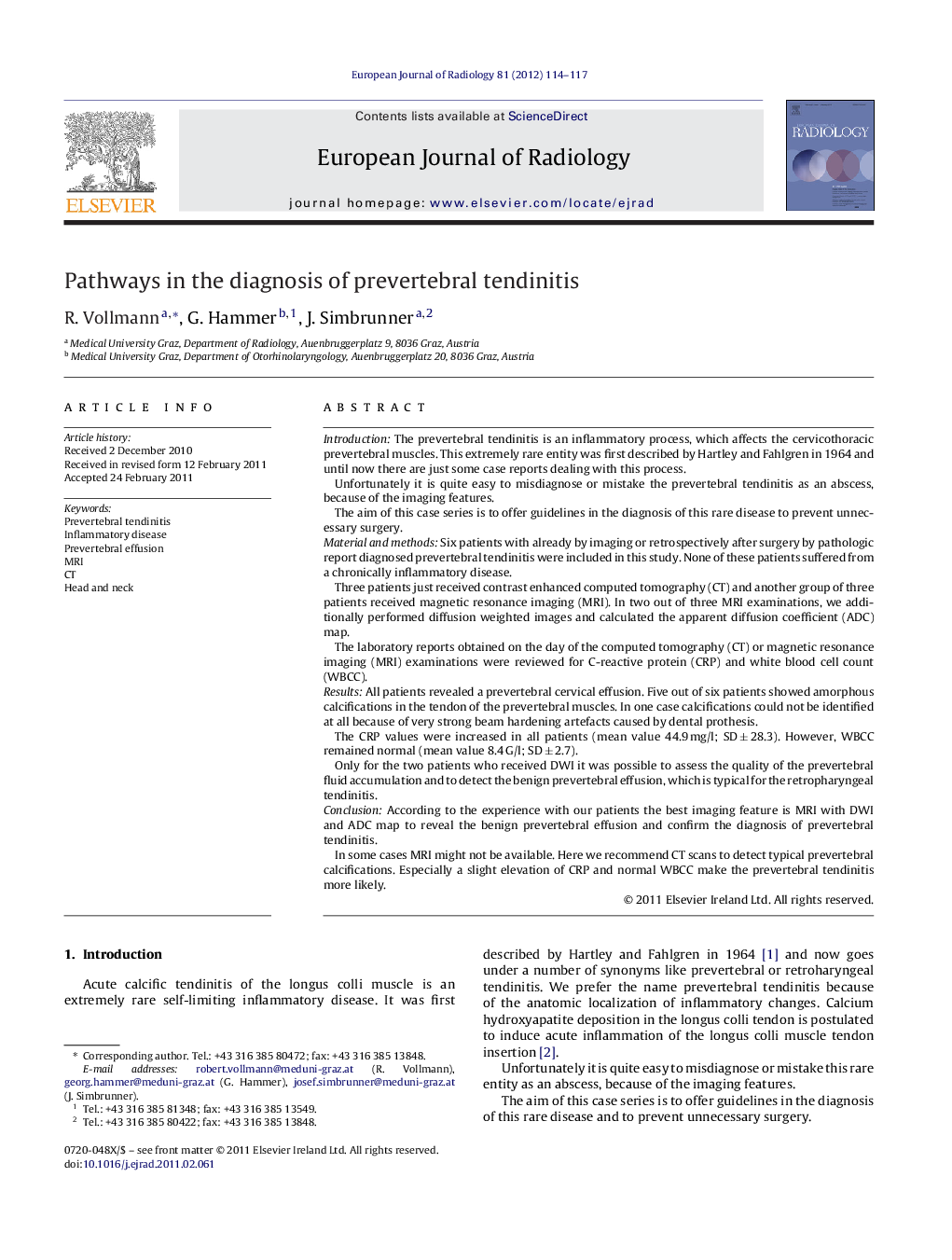| کد مقاله | کد نشریه | سال انتشار | مقاله انگلیسی | نسخه تمام متن |
|---|---|---|---|---|
| 4226279 | 1609794 | 2012 | 4 صفحه PDF | دانلود رایگان |

IntroductionThe prevertebral tendinitis is an inflammatory process, which affects the cervicothoracic prevertebral muscles. This extremely rare entity was first described by Hartley and Fahlgren in 1964 and until now there are just some case reports dealing with this process.Unfortunately it is quite easy to misdiagnose or mistake the prevertebral tendinitis as an abscess, because of the imaging features.The aim of this case series is to offer guidelines in the diagnosis of this rare disease to prevent unnecessary surgery.Material and methodsSix patients with already by imaging or retrospectively after surgery by pathologic report diagnosed prevertebral tendinitis were included in this study. None of these patients suffered from a chronically inflammatory disease.Three patients just received contrast enhanced computed tomography (CT) and another group of three patients received magnetic resonance imaging (MRI). In two out of three MRI examinations, we additionally performed diffusion weighted images and calculated the apparent diffusion coefficient (ADC) map.The laboratory reports obtained on the day of the computed tomography (CT) or magnetic resonance imaging (MRI) examinations were reviewed for C-reactive protein (CRP) and white blood cell count (WBCC).ResultsAll patients revealed a prevertebral cervical effusion. Five out of six patients showed amorphous calcifications in the tendon of the prevertebral muscles. In one case calcifications could not be identified at all because of very strong beam hardening artefacts caused by dental prothesis.The CRP values were increased in all patients (mean value 44.9 mg/l; SD ± 28.3). However, WBCC remained normal (mean value 8.4 G/l; SD ± 2.7).Only for the two patients who received DWI it was possible to assess the quality of the prevertebral fluid accumulation and to detect the benign prevertebral effusion, which is typical for the retropharyngeal tendinitis.ConclusionAccording to the experience with our patients the best imaging feature is MRI with DWI and ADC map to reveal the benign prevertebral effusion and confirm the diagnosis of prevertebral tendinitis.In some cases MRI might not be available. Here we recommend CT scans to detect typical prevertebral calcifications. Especially a slight elevation of CRP and normal WBCC make the prevertebral tendinitis more likely.
Journal: European Journal of Radiology - Volume 81, Issue 1, January 2012, Pages 114–117